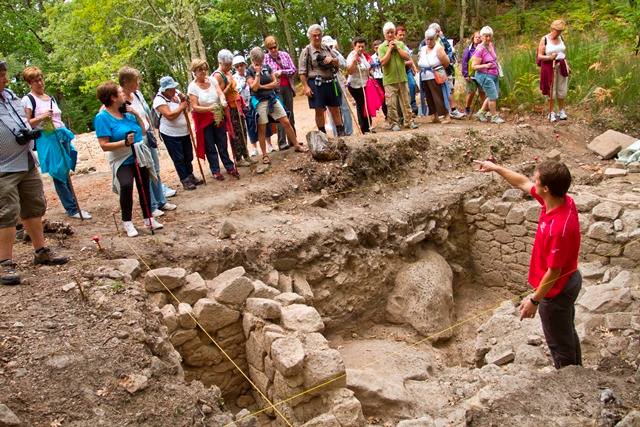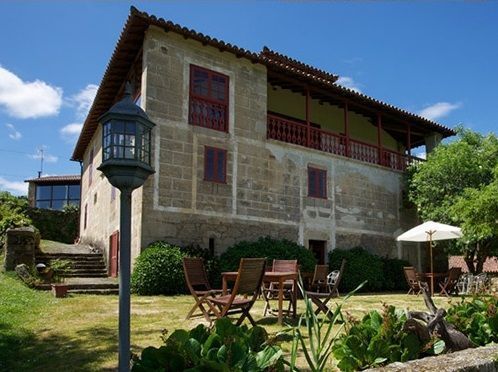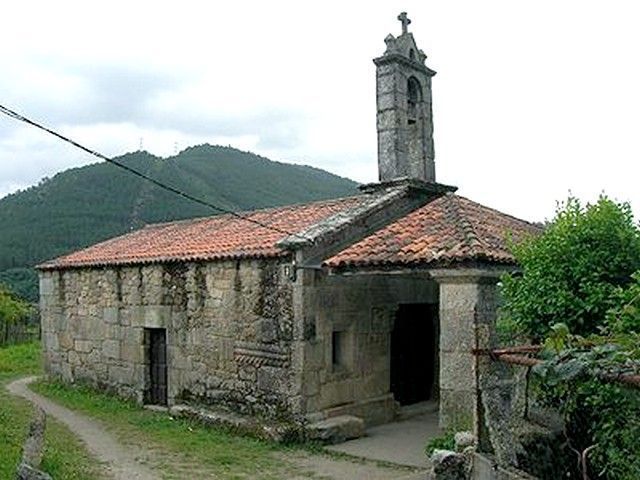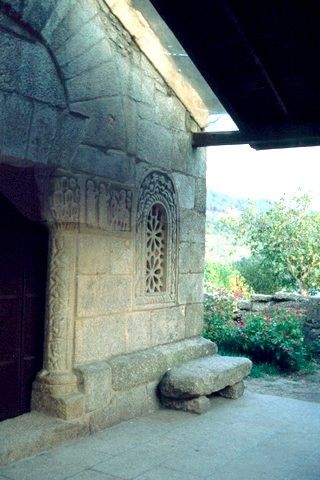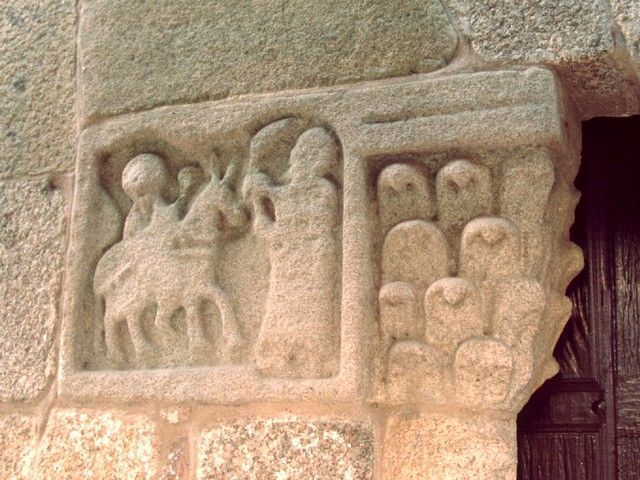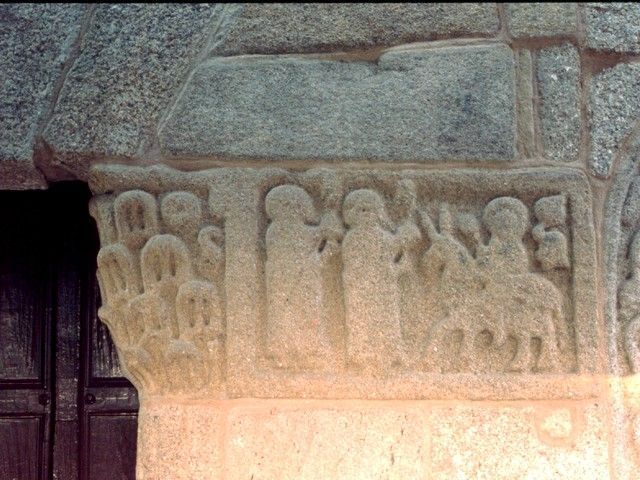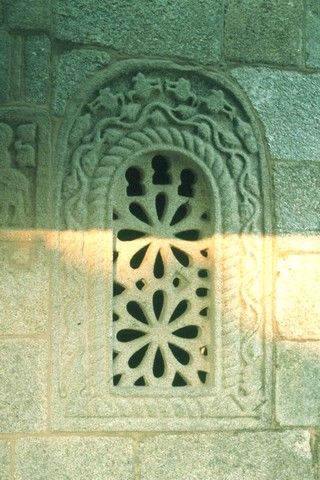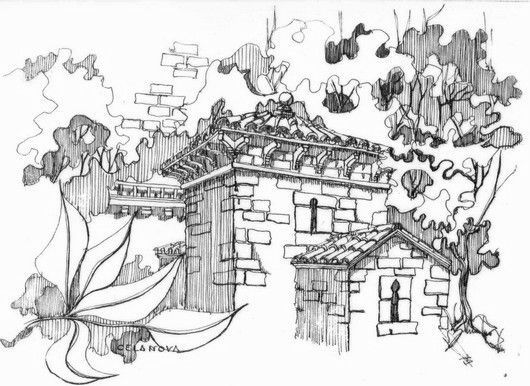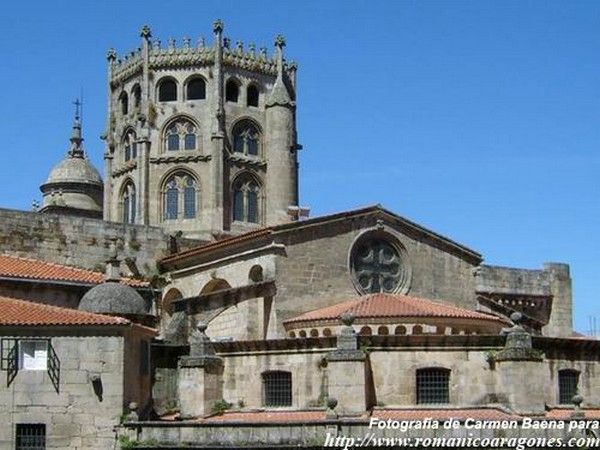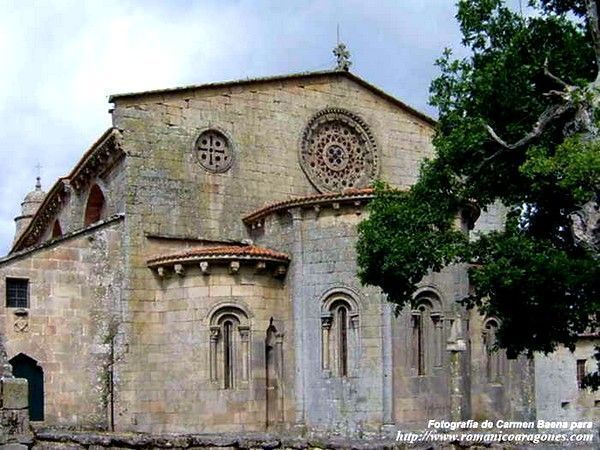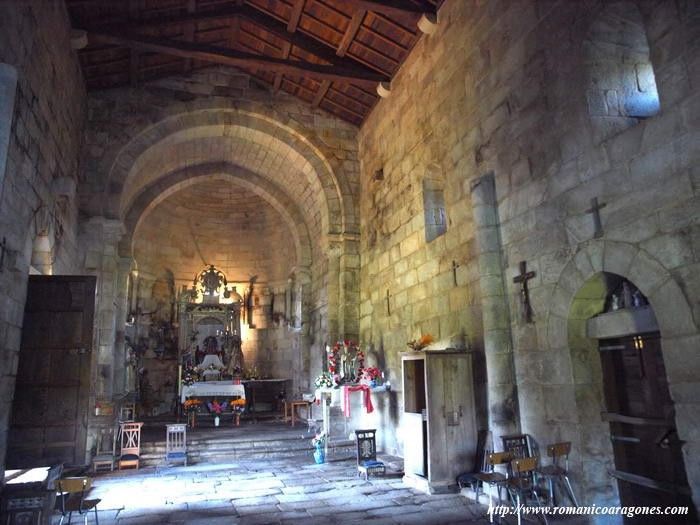SAN GINÉS DE FRANCELOS

Thanks:
We thank our contributor José Gil-Rodrigo from Valencia, fan of the Spanish Early Middle Ages art, who provided us with most of the information and photographs that make up this file. To him is also due the English translation.
Previous notes
- “Bien de Interés Cultural” (Cultural Value Asset) in 1985.
- The chapel that can be seen nowadays was probably built in the 16th century, using the remains of an older Pre-romanesque abbey.
- According to Samuel Eijan and his “Historia de Ribadavia” (1920), in 1871, during the works of the railroad, the foundations of the old abbey were found, spread on both sides of the rails.
Historic environment
 of San Millán de Suso). Due to that singularity, San Ginés is usually absent in the Asturian Pre-romanesque guides, and is only mentioned along with other spread remnants, and not in the main list.
of San Millán de Suso). Due to that singularity, San Ginés is usually absent in the Asturian Pre-romanesque guides, and is only mentioned along with other spread remnants, and not in the main list.Description

The lower part of the walls are made of well cut granite ashlars, of “roman solidity”, so to speak, whereas the upper part has been completed in a more primitive fashion using irregular ashlars and masonry.
The East and South facades are featureless, except a small vertical thin window in the Southern wall -rather a loophole- with a small arch on top with rope-shaped decoration.
In the North facade a rectangular door in an unusual position can be seen, with a big lintel over it, and apparently opened after the wall was completed. San Ginés de Francelos: Detalle de la ventana con celosía.Next to this door and to the right, near the Northwest corner of the building, and one meter over the ground level, one of the rarities of the church can be seen: a big pilaster reused as wall structure, a couple of meters long, in horizontal position, and with two edges with rope-shaped decor. T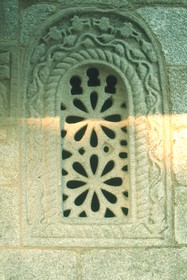 here is another pilaster in the same position, but can only be seen from indoors. The size and appearance of these remnants suggests the size of the original church, far greater than the modest chapel we see today.
here is another pilaster in the same position, but can only be seen from indoors. The size and appearance of these remnants suggests the size of the original church, far greater than the modest chapel we see today.
The Western facade is the most interesting: In the middle, a front door composed of a horseshoe shaped arch, with a lintel made of divergent quoins traversing the lower part; the sides are semi-columns with carvings of vegetable motives, extended outwards with a couple of ashlars with bas-reliefs displaying Gospel scenes (Jesus Christ entering Jerusalem and the Holy Family running to Egypt). The position of these scenes in the granite stones and its narrative purpose predates the didactic carvings of the Romanesque art.
Altough there is no known connection, the vision of this door evoke the facade of Santa Eulalia de Bóveda, which make us think that the ones who built it had seen the strange site of Lugo.
It has been suggested that this front door could have been a triumphal arch of the transept from the original church, translated to the South facade in some of the many reconstructions. That would explain the grooves in the semi-columns of the sides, that could be the insertions of chancel plaques. But the arch design, more decorative than structural, makes this hypothesis unlikely.
The other remarkable element in the Western facade is a window at the right of theSan Ginés de Francelos: Detalle del lado norte  de la portada principal.main door. It’s a rectangular window with semicircular top, carved on a single granite stone piece, and of complex design: A lattice of crossed petals and the rope-shaped edge makes it distinctly Asturian. But besides, a second outer edge made of carved ondulating vine branches, and four very schematic faced birds, along with three small keyhole shaped holes in the upper part, remains us respectively the Visighotic and Mozarabic decors, what makes this window one of the most interesting of the Pre-romanesque art: It looks like the one who carved it had already seen “everything”.
de la portada principal.main door. It’s a rectangular window with semicircular top, carved on a single granite stone piece, and of complex design: A lattice of crossed petals and the rope-shaped edge makes it distinctly Asturian. But besides, a second outer edge made of carved ondulating vine branches, and four very schematic faced birds, along with three small keyhole shaped holes in the upper part, remains us respectively the Visighotic and Mozarabic decors, what makes this window one of the most interesting of the Pre-romanesque art: It looks like the one who carved it had already seen “everything”.
The other window, on the left of the front door, is a square linteled window with embrasure to both sides, without any other remarkable feature.
Inside the chapel there are no Pre-romanesque elements, with the exception of the already mentioned pilaster reused in the wall structure.
The small and very notable chapel of San Ginés de Francelos is a “must” for every traveler interested in medieval buildings, on a tour by the sorroundings of Ribadavia. Or simply traveling through Orense, a province with -as far as we know- the rare privilege of being the only province in Spain with examples of the three basic Pre-romanesque styles of the Iberian peninsula: Asturian in San Ginés de Francelos; Mozarabic in San Miguel de Celanova and Visighotic in Santa Comba de Bande. With the added rarity of the six pairs of Suebian columns displayed on the facade of Santa María Naí, in the province capital city.
Conclusions
Other interesting information
Access: Francelos is 1.2 km SW of Ribadavia (Orense) taking in this city the OU-801 road. On entry to Francelos, an indication can be seen on the left, pointing to the situation of the chapel of San Ginés, some 200 meters to the SE, among vineyards, near the railroad that goes parallel to the Miño river.
GPS Coordinates: 42º 16′ 36,02″N 8º 9′ 20,34″W.
Information telephone: 988471275 / 988470782.
Visiting hours: During religious services. Free entrance.
Bibliography
Isidro G. Bango Torviso: Alta Edad Media, De la tradición hispanogoda al románico (Sílex, 1994)
Antonio Bonet Correa: Arte Pre-románico Asturiano (Ediciones Polígrafa S.A., Barcelona, 1987)
Lorenzo Arias Páramo: Prerrománico Asturiano (Ediciones Trea S.L., Gijón, 1993)
Jacques Fontaine: El Prerrománico **(Ediciones Encuentro, Madrid, 1978)
L’Art Préroman Hispanique – L’Art Mozarabe: Jacques Fontaine(ZODIAQUE)
Portals
Capilla de San Gines de Francelos
Capela de San Xés de Francelos
Capela de San Xés de Francelos
Historia de Ribadavia Y Sus Alrededores






